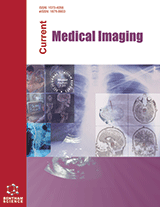Abstract
Purpose: Parkinson's disease (PD), which is the second most common neurodegenerative disease following Alzheimer’s disease, can be diagnosed clinically when about 70% of the dopaminergic neurons are lost and symptoms are noticed. Neuroimaging methods such as single photon emission computed tomography have become useful tools in vivo to assess dopamine transporters (DATs) in the striatal region. However, inter- and intra-reader variability of construing the images might result in misdiagnosis. To overcome the challenges posed by classification of the disease, image preparation techniques and a back propagation neural network (BPNN) have been proposed. The aim of this study is to show that the proposed method can be used for the classification of PD with high accuracy.
Methods: In this study, we used basic image preparation techniques and a BPNN on DAT imaging datasets from the Parkinson’s Progression Markers Initiative. 1,334 PD and 212 normal control (NC) subjects were included. In the image preparation phase, adaptive histogram equalization was applied to the cropped images, followed by image binarization. Then, the mass-difference method was applied to separate the regions of interest with similar values. Finally, the binarized images were subtracted from the original images, and the average pixel per node approach was applied to the images to minimize the inputs. In the BPNN phase, 400 input neurons and 2 output neurons were used. The dataset was divided into three sets: training, validation, and test. The BPNN was trained several times in order to obtain the optimum values.
Results: The use of 40 hidden neurons, a learning rate of 0.00079, and a momentum factor of 0.90 produced superior results and were applied in the final BPNN architecture. The tolerance value used was 0.80. Uniquely, we found the sensitivity, specificity, and accuracy for PD vs. NC classification to be 99.7%, 99.2%, 99.6%, respectively. To the best of our knowledge, this is the highest accuracy value achieved in the existing literature. Our method increases computational speed together with improved performance.
Conclusion: We have shown that effective image processing methods and the use of BPNN can successfully be applied to PD datasets to accurately determine any abnormalities in DATs. Using the shallow neural network, this procedure requires less processing time compared to other methods, and its accuracy, sensitivity, and specificity are reliable. However, further studies are needed to establish a prediction method for the preclinical and prodromal stages of the disease.
Keywords: Dopamine transporter, Parkinson's disease, back propagation, neural network, image preparation, SPECT.
[http://dx.doi.org/10.1136/jnnp.2006.100107] [PMID: 17400591]
[http://dx.doi.org/10.1016/j.parkreldis.2014.02.013] [PMID: 24631501]
[http://dx.doi.org/10.1038/s41531-018-0058-0] [PMID: 30003140]
[http://dx.doi.org/10.1118/1.4845115] [PMID: 24387526]
[http://dx.doi.org/10.1212/WNL.51.2_Suppl_2.S2]
[http://dx.doi.org/10.1093/brain/114.5.2283] [PMID: 1933245]
[http://dx.doi.org/10.1016/S0966-6362(98)00010-1] [PMID: 10200392]
[PMID: 15640722]
[http://dx.doi.org/10.1038/nrn939] [PMID: 12360322]
[http://dx.doi.org/10.1007/s10916-015-0328-x] [PMID: 26385550]
[http://dx.doi.org/10.1016/j.parkreldis.2009.08.007] [PMID: 19846332]
[http://dx.doi.org/10.1038/nrneurol.2012.242] [PMID: 23183883]
[PMID: 12442672]
[http://dx.doi.org/10.1136/oem.2006.027003] [PMID: 17332139]
[PMID: 10565775]
[PMID: 10768556]
[http://dx.doi.org/10.1016/j.parkreldis.2004.04.002] [PMID: 15261880]
[http://dx.doi.org/10.1007/s00259-004-1667-x] [PMID: 15791439]
[http://dx.doi.org/10.1088/0031-9155/51/3/007] [PMID: 16424582]
[http://dx.doi.org/10.1016/j.eswa.2009.06.040]
[http://dx.doi.org/10.1145/1858378.1858392]
[http://dx.doi.org/10.1016/j.eswa.2011.04.028]
[http://dx.doi.org/10.1016/j.neunet.2017.04.003] [PMID: 28482227]
[http://dx.doi.org/10.1109/TNS.1978.4329385]
[http://dx.doi.org/10.1002/hbm.460020402]
[http://dx.doi.org/10.1109/ICEICE.2017.8191888]
[http://dx.doi.org/10.1109/ICM.2016.7847911]
[http://dx.doi.org/10.1117/12.2502010]
[http://dx.doi.org/10.1109/TSMC.1979.4310076]
[http://dx.doi.org/10.1109/ICIT.2006.372219]
[http://dx.doi.org/10.1109/UIC-ATC-ScalCom-CBDCom- IoP.2015.245]
[http://dx.doi.org/10.1109/ICDAR.2017.217]
[http://dx.doi.org/10.21629/JSEE.2017.01.18]
[http://dx.doi.org/10.1118/1.4742055] [PMID: 23039635]
[http://dx.doi.org/10.1016/j.nicl.2017.09.010] [PMID: 28971009]
[http://dx.doi.org/10.1088/1741-2560/12/2/026008] [PMID: 25710187]
[http://dx.doi.org/10.1097/MNM.0b013e328347cd09] [PMID: 21659911]
[http://dx.doi.org/10.1118/1.4730289] [PMID: 22830772]
[http://dx.doi.org/10.1016/j.eswa.2013.11.031]















